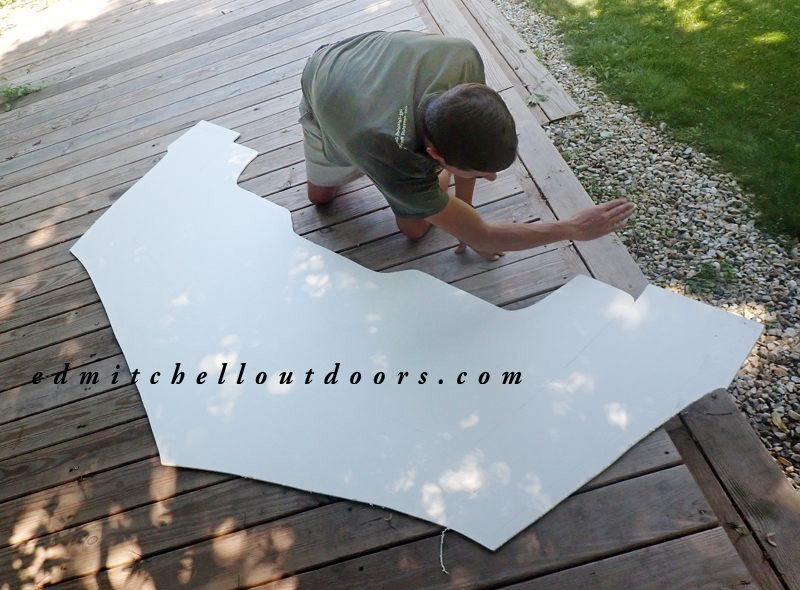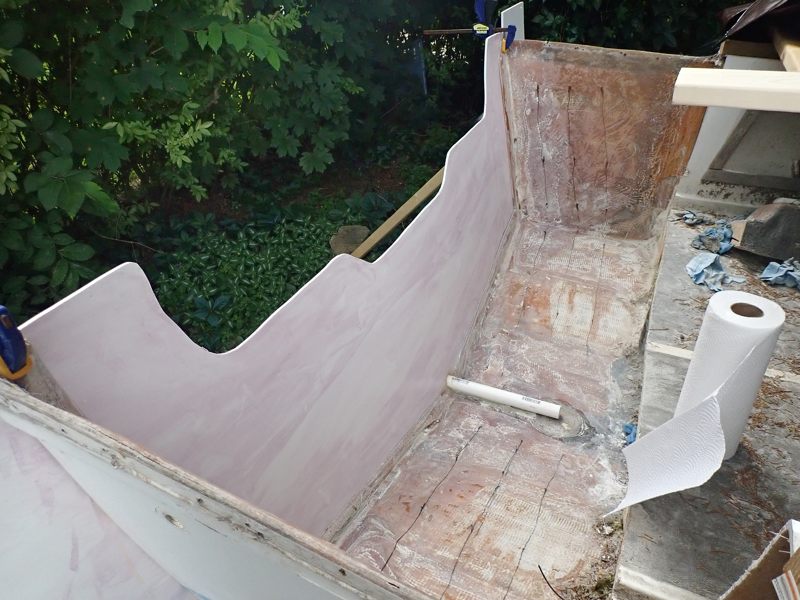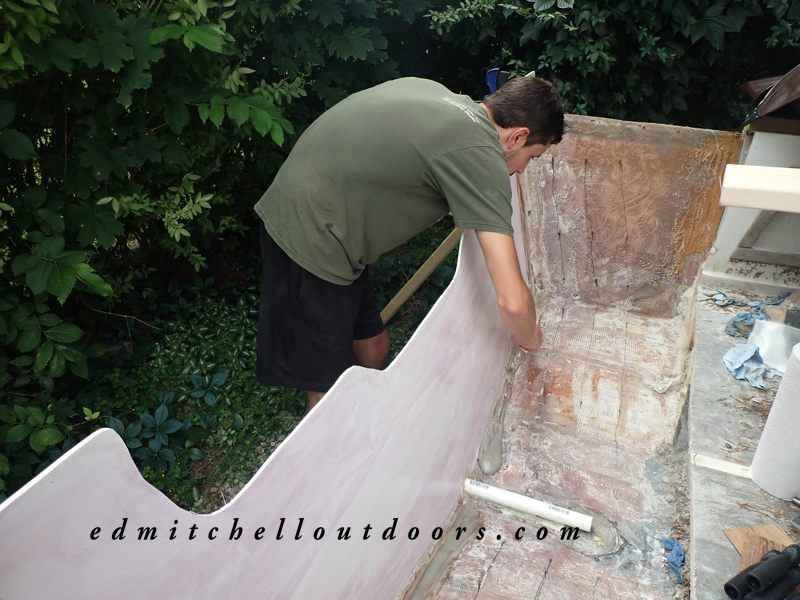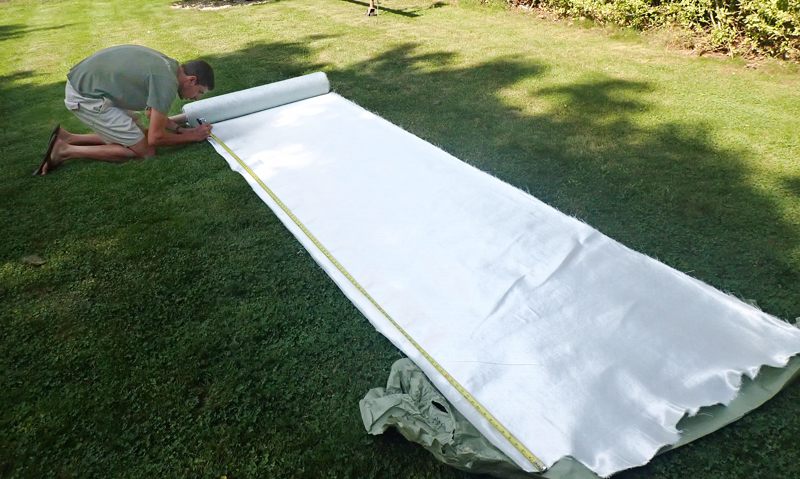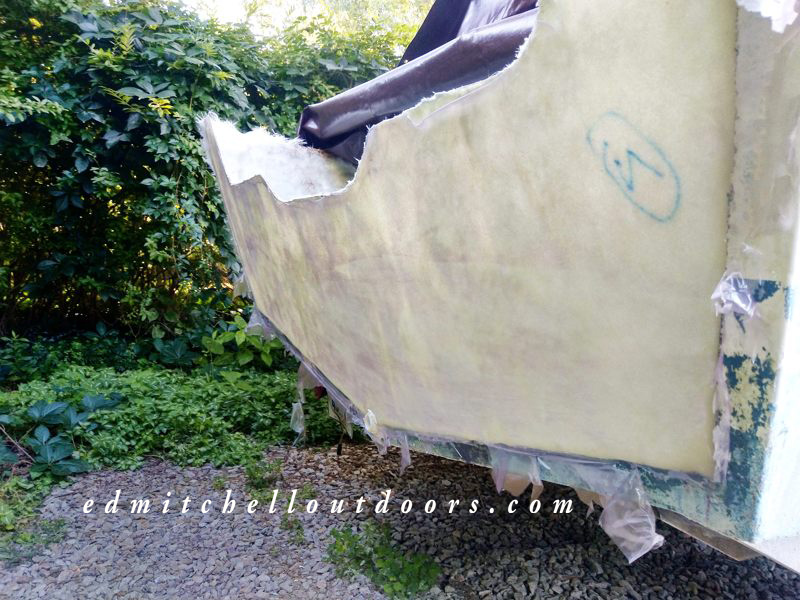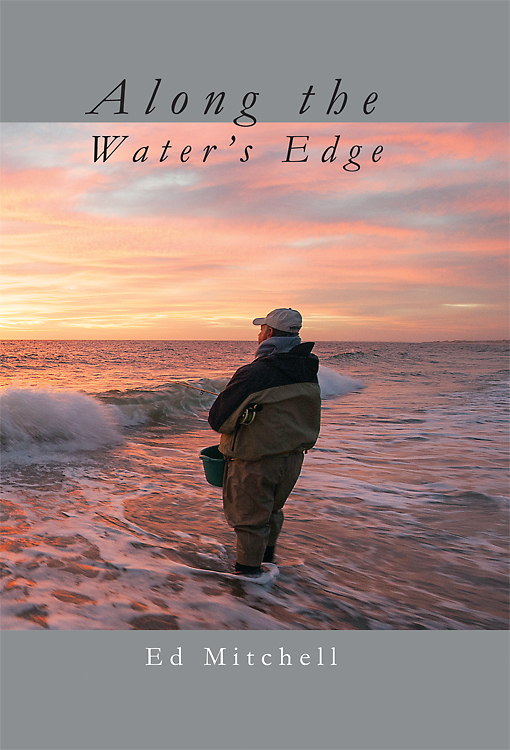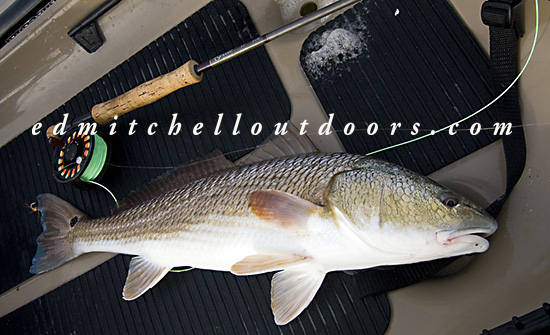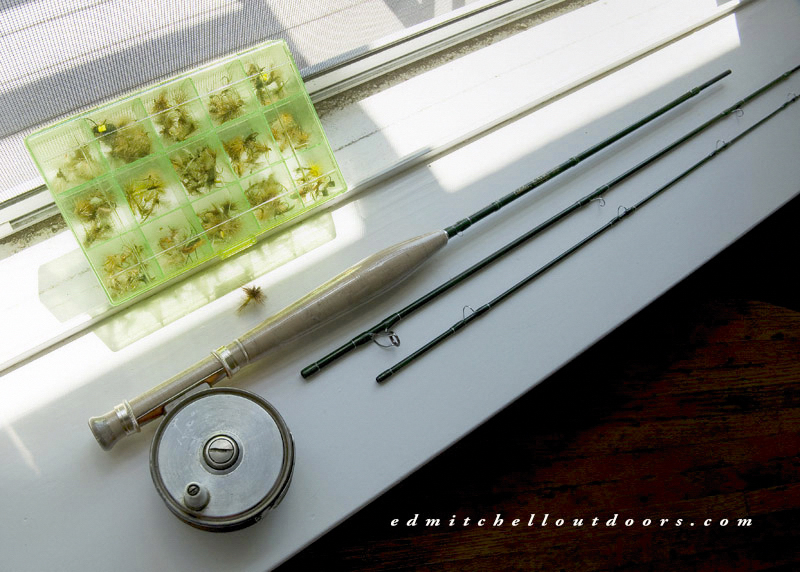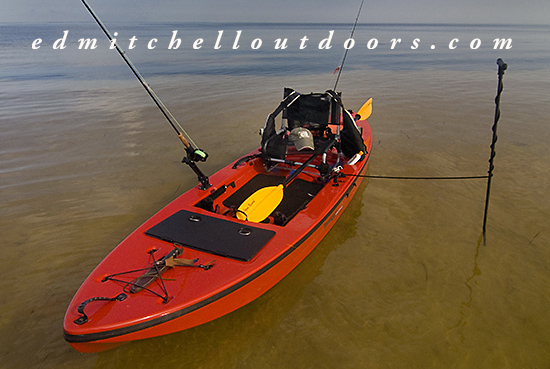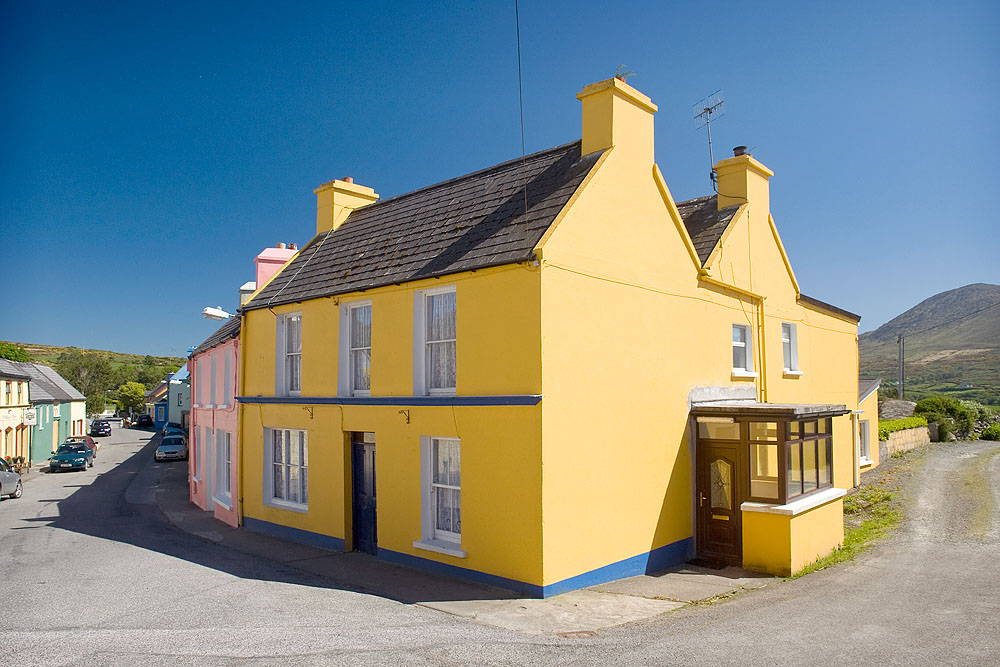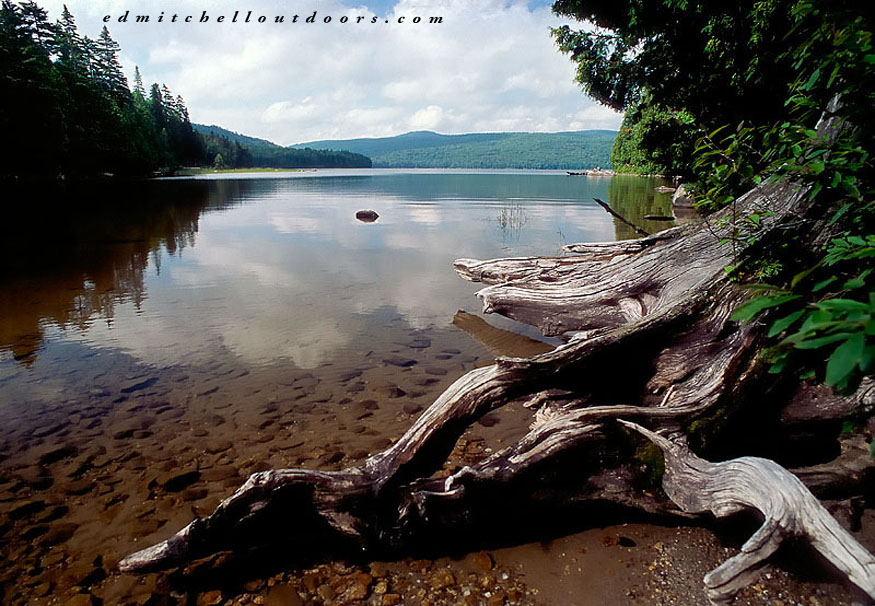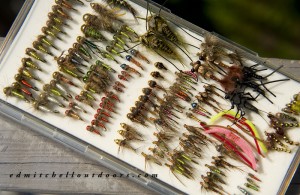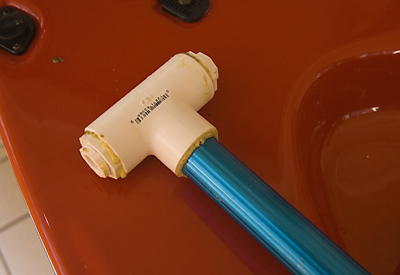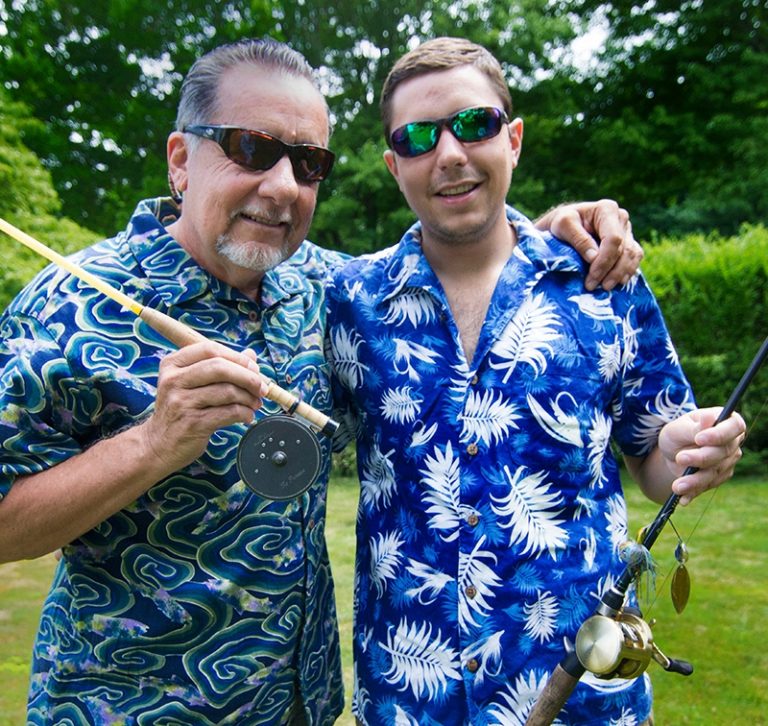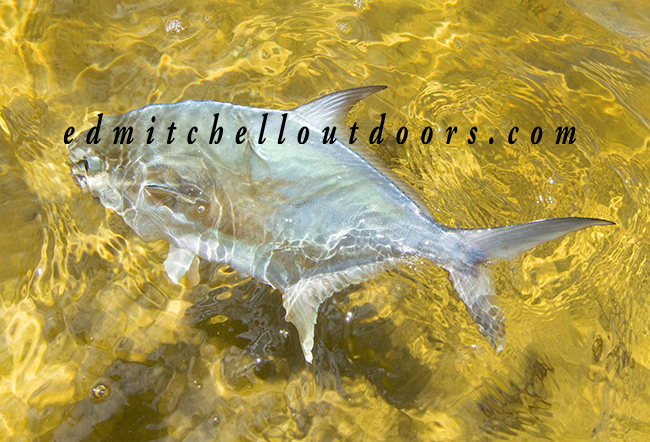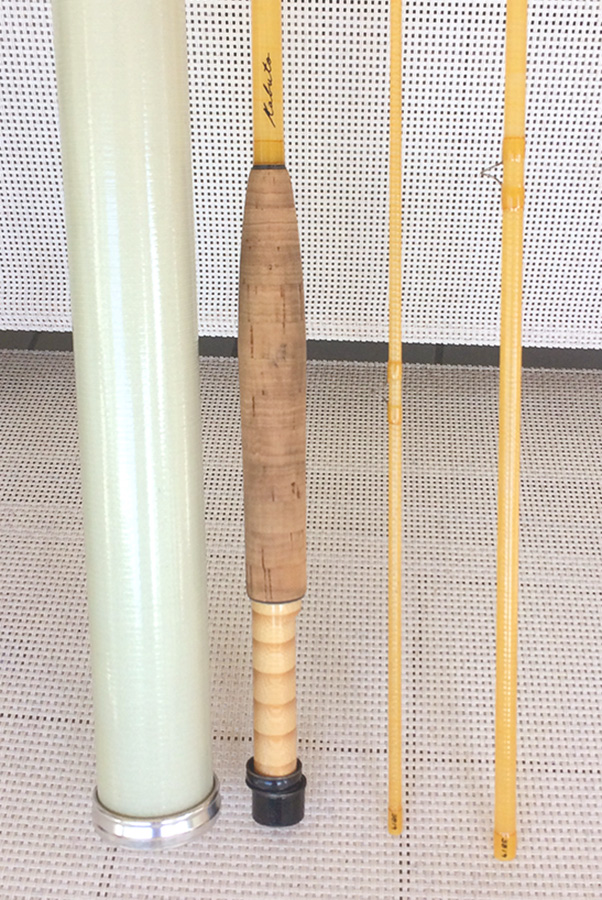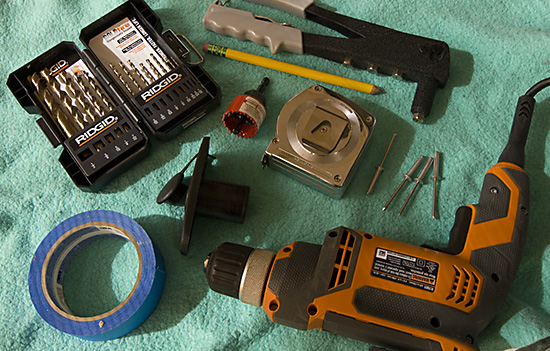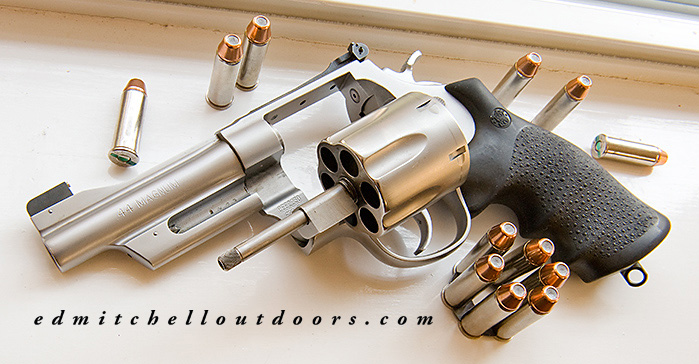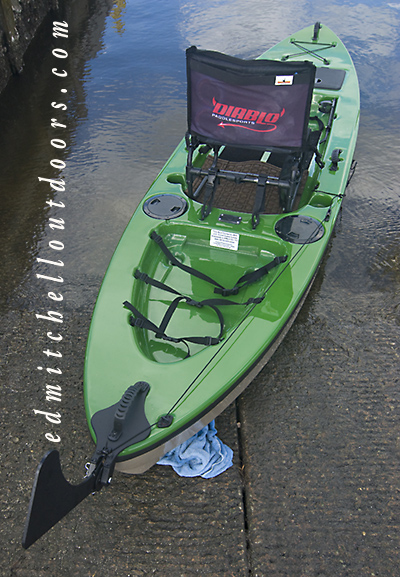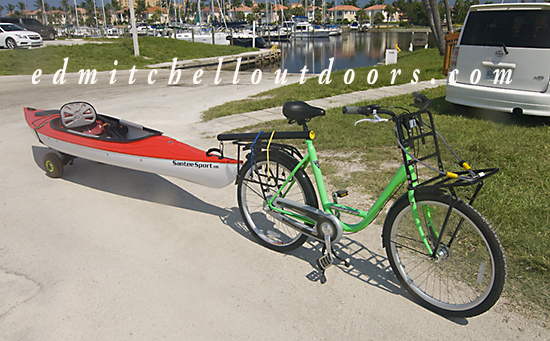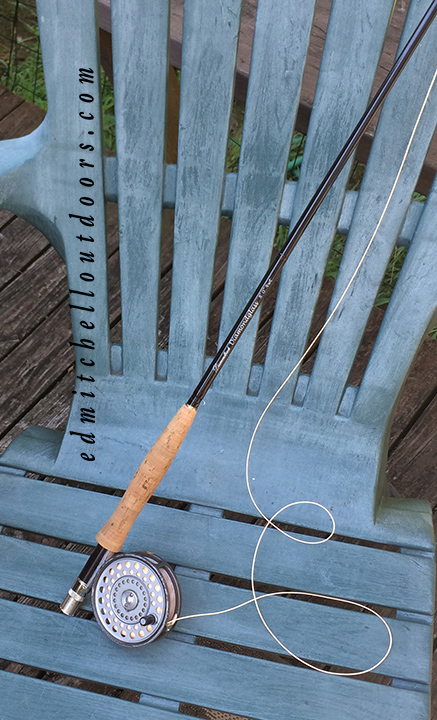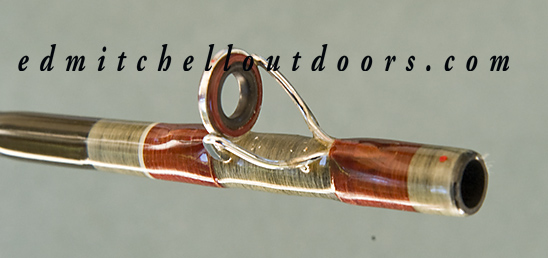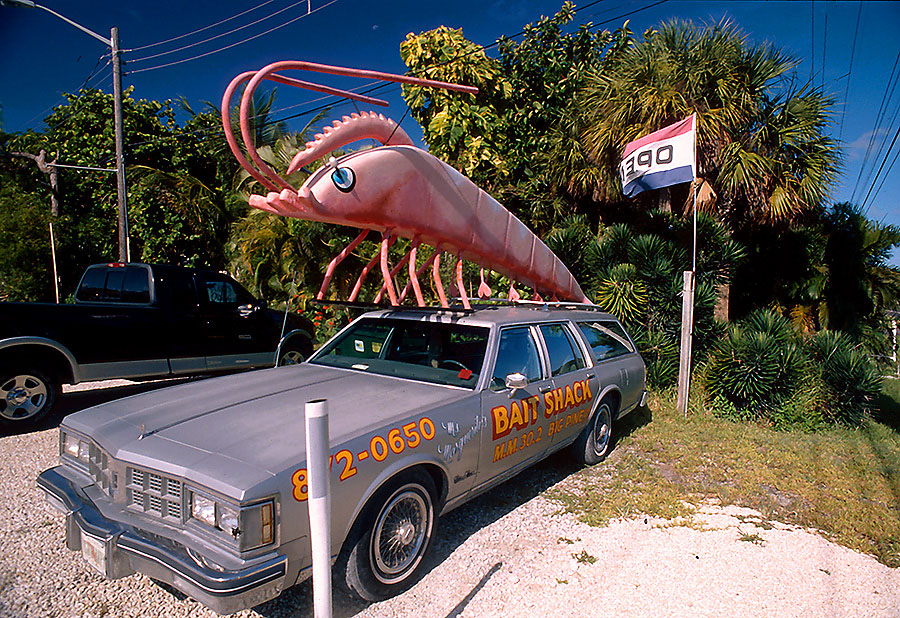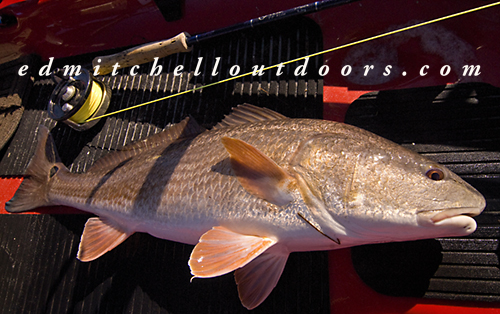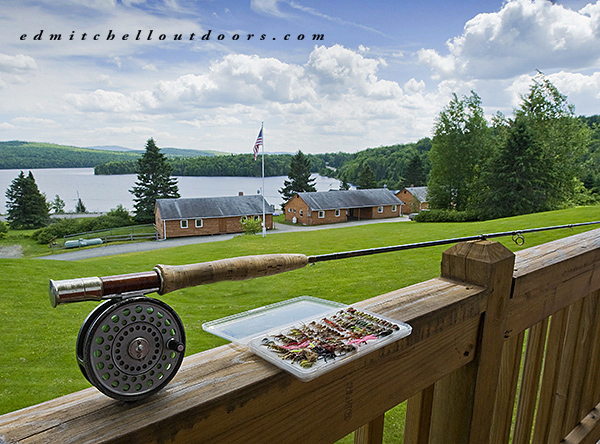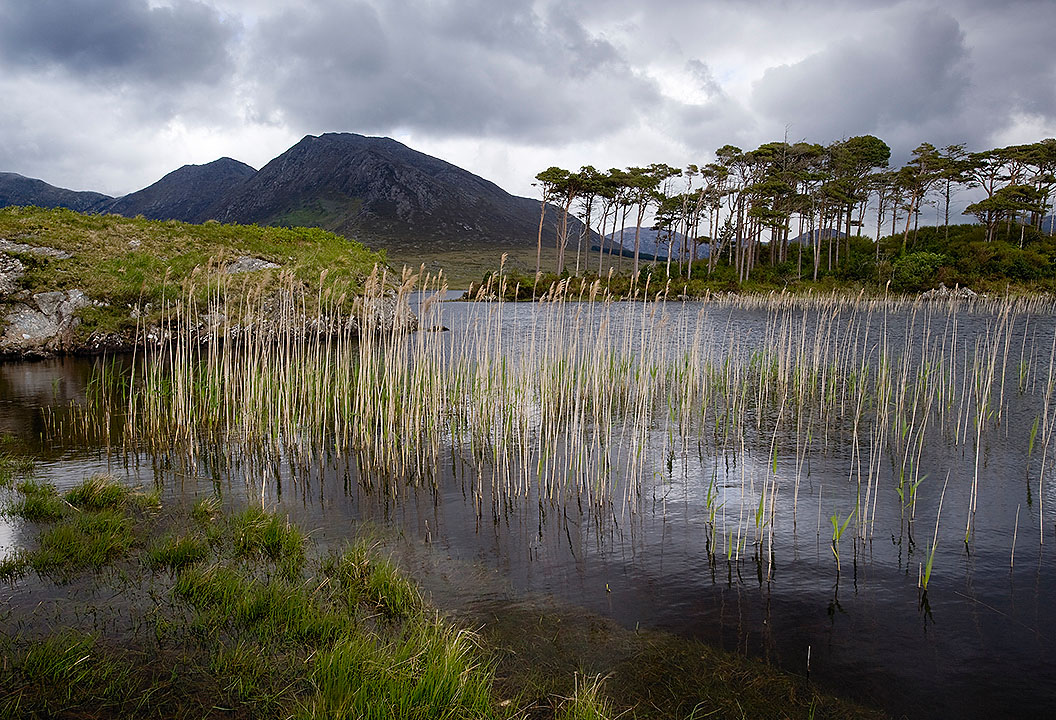A Gene Edward’s Model 32# Fiberglass Fly Rod

Gene Edwards Model 32# Fiberglass Rod
Last time we looked at a Leon Chandler Signature fly rod. This time we have a much older and rarer rod, a Gene Edwards model 32# fiberglass fly rod. It likely goes all the way back to the 1950’s – the dawn of “glass” rods in our country.
Gene (Eugene) Edwards along with his brother William (Billy) and their father Eustis, were the Holy Trinity of bamboo rod builders – among the best to ever split cane. Their reputation was worldwide, and their cane beauties are still sought after today. Best I can figure, later in his career, Gene decided to add “glass” rods to their lineup. It was not unheard for cane rod makers to do so. Heddon make “glass” rods right into the 1960’s. Payne made them too.
I don’t know who supplied “glass” blanks to Edwards. To my eye it is a translucent E Glass phenolic resin rod bearing some resemblance to the J. Kennedy Fisher blanks Winston used. The reel seat is down-locking with a cork insert. Just forward of the grip, in gold lettering, is written Gene Edwards 32# and nothing else. The rod is 7.5′ in length and 2-piece, sporting a carboloy stripping guide, wire snake guides, a tiptop, and a hook-keeper. All wraps are brown, tipped with orange. The rod weighs 3.8 ounces. It has a metal ferrule which seems firmly connected.
Edwards likely finished these fiberglass rods in his Mt. Carmel, Connecticut shop. They were budget friendly and didn’t sport the same high-end hardware used on the cane rods. They were sold in the shop, through sporting good dealers such as Abercrombie, and likely through hardware stores too.
Given the rod’s age and the fact it doesn’t belong to me, I have decided not to cast it. The rod is not marked for a line, but I bet it is a 5 or 6wt. (HEH or HDH) This rod doesn’t have an original tube (doubt it came with one), and the sock may not be original as well. Overall, the rod is showing its age. The varnish over the wraps has dried out. One snake guide is missing. And the grip has a thumb groove, which may not be factory. Still this rod could be refinished into a fine-looking, historically significant rod. Below you see it with a reel of the same vintage.
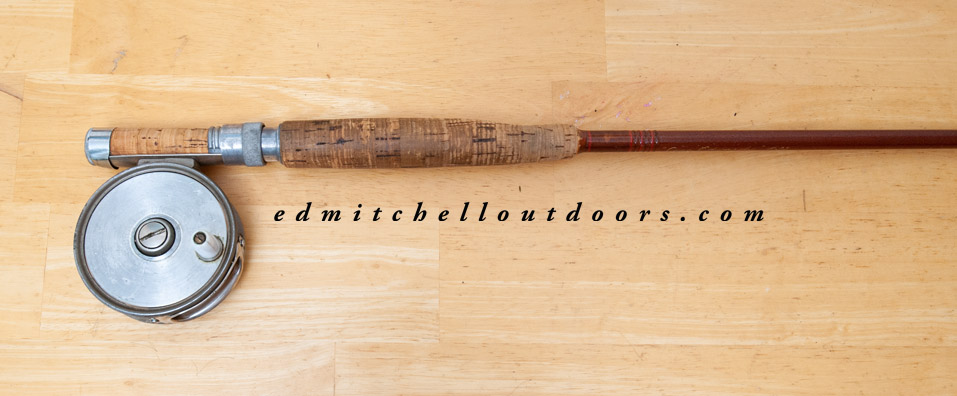
Gene Edwards model 32# with an Ocean City Reel
Hope you enjoyed seeing this fiberglass rod. I know I enjoyed learning about it. If you have any interest in acquiring it, contact me at my home email and I will put you in touch with the owner. I’m doing this as a favor only.Interested in reading about other fiberglass fly rods? Check out these links. Winston 2wt Stalker, A Cabela 50th Anniversary 3wt, Kabuto 3wt, Diamondglass 4wt. Leon Chandler Signature 4/5wt, Winston 4wt Retro, Winston 5wt , Winston 6wt, Cabela 7/8wt, Winston 8wt, Winston 1owt, Winston 12wt ,
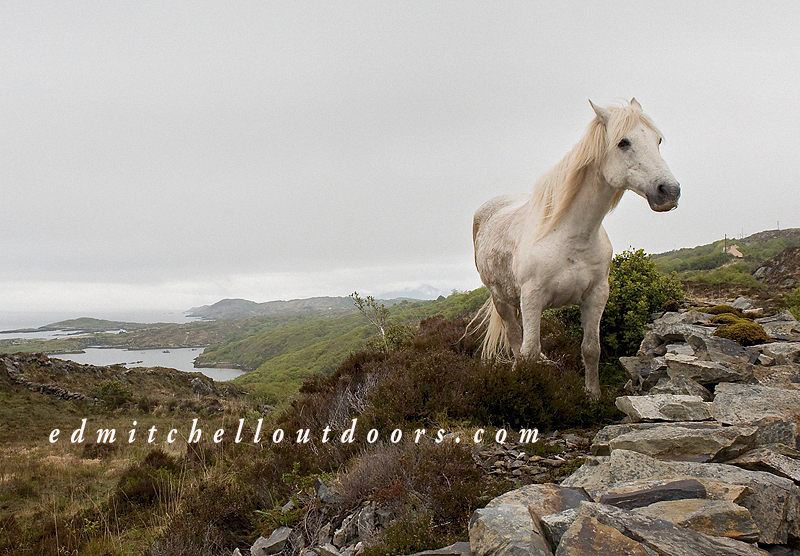

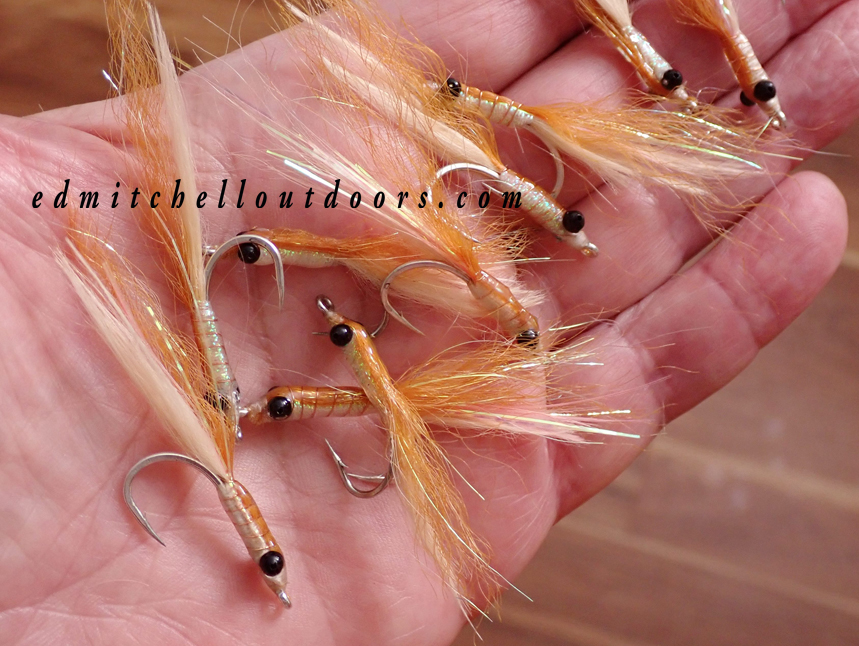
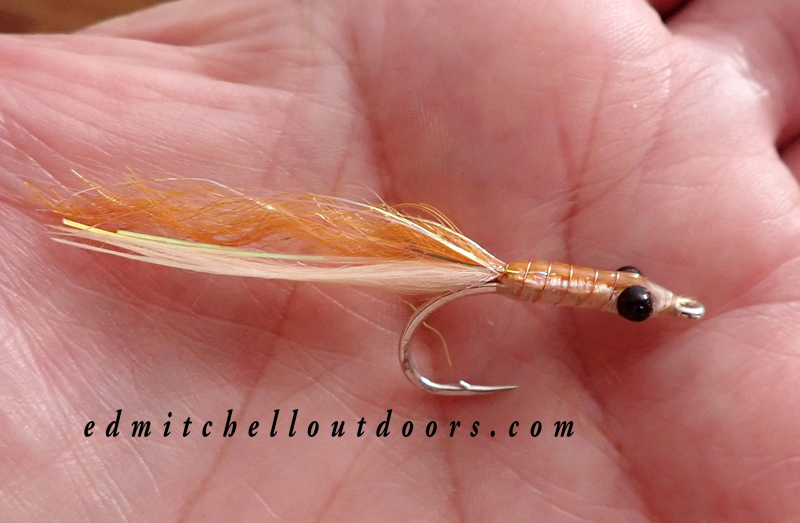
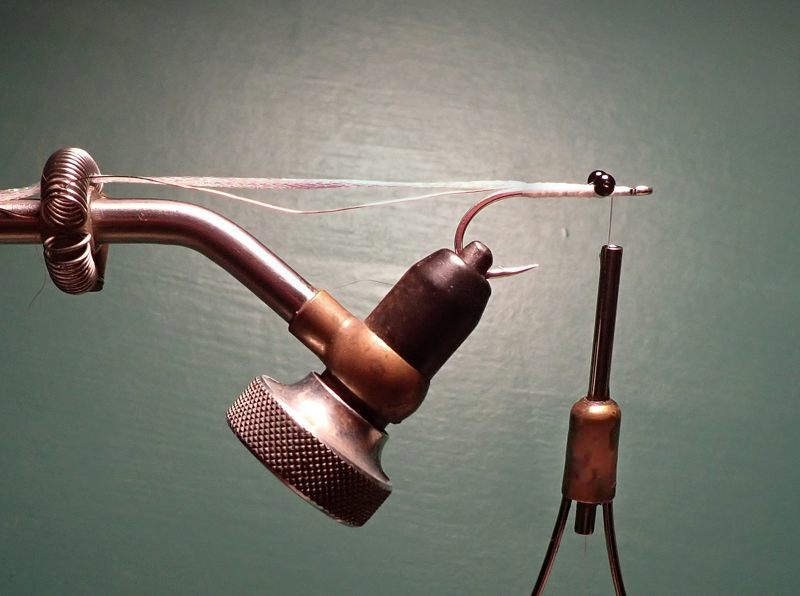
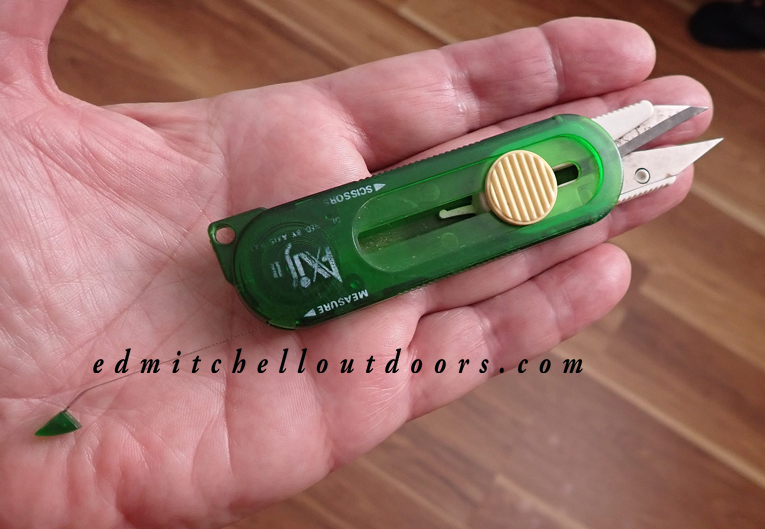
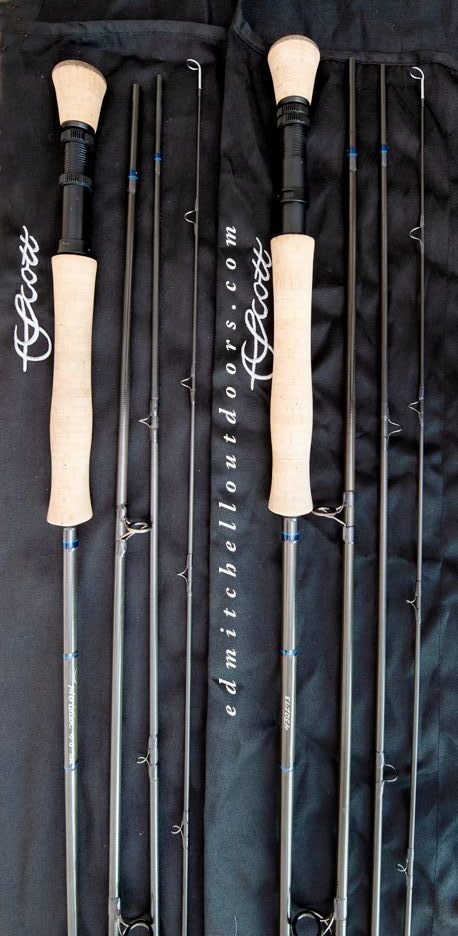 Let’s take a look at two fine saltwater rods from Scott- a 7wt and 9wt Meridian. I
Let’s take a look at two fine saltwater rods from Scott- a 7wt and 9wt Meridian. I  For the review, I used a Cortland Classic SL 444 9wt floating line. This is a decent line, but not what you might call a high-performance saltwater line. During the cast the Meridian generated an almost in perceivable single shockwave. Reaching 70 feet was a breeze. Effortless much like the 7wt. And without heavy lifting, the rod sailed 85 feet of line plus leader. Wow. In close the Meridian flexed with 12′ of line out. Don’t think you’ll ever need that? I’ve seen memorable times when striped bass and false albacore ran down the trough right at my feet.
For the review, I used a Cortland Classic SL 444 9wt floating line. This is a decent line, but not what you might call a high-performance saltwater line. During the cast the Meridian generated an almost in perceivable single shockwave. Reaching 70 feet was a breeze. Effortless much like the 7wt. And without heavy lifting, the rod sailed 85 feet of line plus leader. Wow. In close the Meridian flexed with 12′ of line out. Don’t think you’ll ever need that? I’ve seen memorable times when striped bass and false albacore ran down the trough right at my feet.